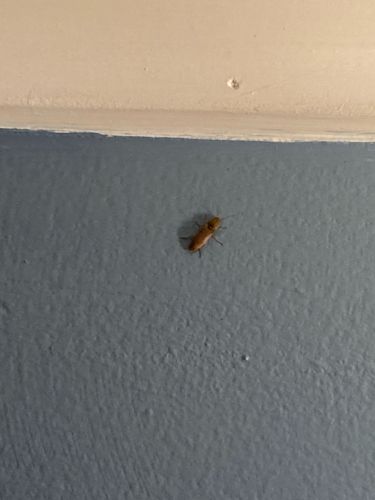Cockroach
Scientific Name: Various species (e.g., Blattella germanica for German Cockroach, Periplaneta americana for American Cockroach)
Order & Family: Order: Blattodea, Family: Blattidae (or various other families within Blattodea)
Size: Depending on the species, adult cockroaches can range from 0.5 inches (1.3 cm) to 2 inches (5 cm) or more in length. The one in the image appears to be on the smaller side, possibly a German Cockroach nymph or a smaller adult species, around 0.5 to 1 inch.

Natural Habitat
Cockroaches prefer warm, dark, and humid environments. They are commonly found indoors in kitchens, bathrooms, basements, and areas near food and moisture sources. Outdoors, they can be found in leaf litter, under logs, and in sewers.
Diet & Feeding
Cockroaches are omnivores and scavengers. They will eat almost anything, including food scraps, decaying matter, starches, sweets, grease, human and animal waste, paper, fabric, and even other cockroaches when food is scarce.
Behavior Patterns
Cockroaches are primarily nocturnal and gregarious. They can run very quickly and will scatter when disturbed. They reproduce rapidly, with females producing multiple egg cases (oothecae) in their lifetime. They are known for their ability to hide in cracks and crevices, making them difficult to eradicate once established. Some species can fly, but many prefer to run.
Risks & Benefits
Potential Risks: Cockroaches are considered pests. They can contaminate food and surfaces with bacteria (like Salmonella and E. coli), allergens, and pathogens, leading to food poisoning, asthma, and other allergic reactions. They can also cause an unpleasant odor when infestations are severe. Potential Benefits: In natural environments, they play a role as decomposers, helping to break down organic matter. However, their benefits are outweighed by their risks in human-occupied structures.
Identified on: 8/16/2025